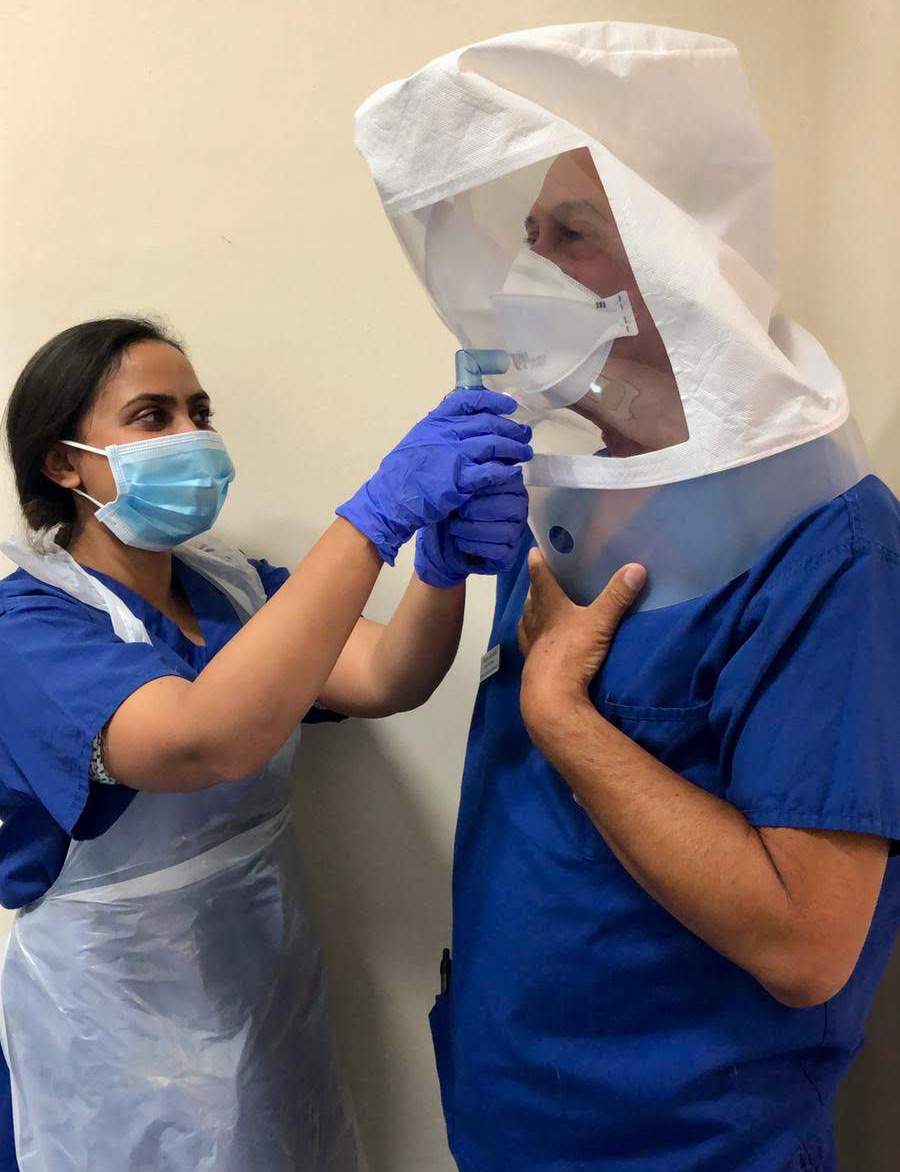A research team led by a consultant at Sussex Eye Hospital is working on a study to determine whether face masks worn by healthcare workers can be reused once they are sterilised.
Dr Saul Rajak wanted to protect the supplies of PPE and limit the environmental impact of single-use waste generated during the COVID-19 pandemic and investigating whether single-use masks are still effective after being sterilised in an autoclave machine.
The Eschmann autoclaves, provided free of charge to the hospital, sterilise the masks using high-temperature steam and pressure, killing any live viruses and bacteria that the used mask may carry.
The masks are then fit tested – a check which makes sure they properly seal around the user’s face which stops viruses from entering. Following that, they are sent for filter testing see if the fabric still provides an effective barrier to microscopic particles.
The study has shown promising results so far, with autoclave treatment not significantly affecting the fit or the f ilter function of the masks.
ilter function of the masks.
Dr Rajak and team have been reviewing the results with Public Health England and have submitted the results for publication in a scientific journal.
Pictured: Nidhi Desai (left) Junior doctors and research investigator (right) Warran Woodruff performing a ‘Fit Test’
Dr Rajak said:
“This has been a really interesting study which might help guide our thinking and planning on PPE use in the healthcare sector. We all know that single-use products are costly and have a vast impact on the environment; this study aims to provide research data that may make PPE more sustainable and more available.
“Once we know the masks are safe to be reused and how they can be sterilised, this could also become an option for the public too. It’s a long way off becoming a reality but it’s been interesting working on this to see if things could be changed in the future. But for now, the study remains in the early stages of research.”
Dr Rajak added:
“We are working on testing the integrity of the masks in as many ways as possible to ensure the highest level of safety for wearers, but also testing the attitudes of people towards the idea of wearing re-usable PPE and whether they’d feel happy enough to do this.”

